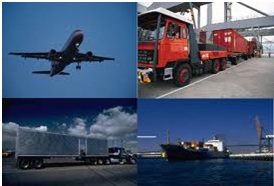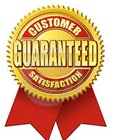|
 |
|
 |
|
|
||
Distribution, logistics and the supply
chain
Distribution is...
Getting products to customers in the right place and at the right time.
A channel of distribution shows how a product gets from producer to customer. There are two alternatives:
a) direct selling (producer selling directly to customers).
b) using distributors (producer selling to customers via wholesalers and/or retailers)
Distribution is closely related to logistics, concerned with transporting supplies to customers on time and in the right quantity and quality.
This is part of the supply chain which looks like: Suppliers (of raw materials) to..
Producer to...
Distributors (retailers/wholesalers) to...
Customers.
What to consider in the supply chain
1. Customer delight The supply chain should be seen as a complete system consisting of interdependent activities (like purchasing, production, delivery to customers and transportation) with the overall aim of delighting customers (particularly to ensure product availability, quality and customer service). So it should be co-ordinated and flexible (adapting well to changes in customer requirements).
2. Costs The costs of the supply chain should be minimized without sacrificing quality and customer satisfaction – how?
a) stock (or inventory) control Minimizing stocks of goods and materials without affecting product availability. This is linked to the idea of just-in-time – see total quality management.
b) economies of scale Benefiting from the cost advantages of large scale production (e.g. assembly line production and discount buying).
c) globalization Producing and purchasing in low cost countries like China and India.
d) transport
e) outsourcing Using outside companies to carry out certain managerial activities (e.g. transport and IT services).
f) close supplier relationships (to ensure they deliver the right quality and quantity on time).
g) facilities Deciding upon the location and number of depots and factories and making sure they are run effectively.
3. Choosing a channel of distribution Unless they decide to sell their products directly by mail order or direct customer contact, producers will have to use distributors (wholesalers/retailers). Factors to consider are:
a) product and size of the retailer Big retailers like supermarkets buy direct from the producer (or manufacturer), whilst small stores use wholesalers.
b) expertise of the distributor The distributor should have:
c) control The producer wants as much control as possible over how effectively its products are sold (so car makers often have exclusive dealerships).
d) customer service Retailers are usually best able to deliver what customers want (value, quality, convenience and product availability).
e) buying trends In recent years out of town shopping centres and Internet sales have both boomed.
f) exports Producers (particularly smaller ones) use overseas agents to sell their products abroad.
g) producer relationships with distributors These should be long-term and based upon mutual trust and sensitivity to each other’s needs.
4. Vertical integration This is a producer buying its suppliers (backwards integration), or retailers/wholesalers (forwards integration). Since the 1990’s this has become less popular.
“Battles, campaigns and even wars have been won or lost primarily because of logistics” - Dwight D. Eisenhower, American president and general (pictured right) His fellow American general in World War Two, George Patton, also believed that supplies of materials (food, equipment, etc.) are at least as important as strategy.
“A little neglect may breed mischief. For want of a nail the shoe was lost; for want of a shoe the horse was lost; and for want of a horse the rider was lost” - Benjamin Franklin , American politician and businessman (pictured right) Inadequate supplies, however small, are disastrous.
“Retail is detail” - Howard Schultz (founder and boss of Starbucks, pictured right) Attention to detail is important in every part of the supply chain But it is particularly important in retailing where customers appreciate even small improvements in service (e.g. Schultz re-introduced coffee grinding in Starbucks stores for coffee aroma).
Best books and articles
The 3 A’s describe the characteristics of excellent supply chains:
a) agility Quickly responding to short-term changes in demand or supply.
b) adaptability Adjusting to different customer requirements and external changes (political, economic, social and technological).
c) alignment Effectively combining all the supply chain’s activities.
Yossi Sheffi (pictured right), The Resilient Enterprise (2005) The best supply chains are:
James Womack (pictured top), Daniel Jones (pictured middle) and Daniel Roos (pictured bottom), The Machine That Changed the World (1990)
This book describes Toyota’s supply chain, once widely admired for its:
|
|
|
||
|
|
||
| Copyright © wisdomtowin.com 2025 All Rights Reserved | ||
|







 Hau Lee
Hau Lee



